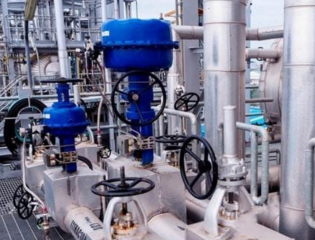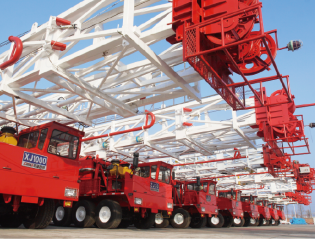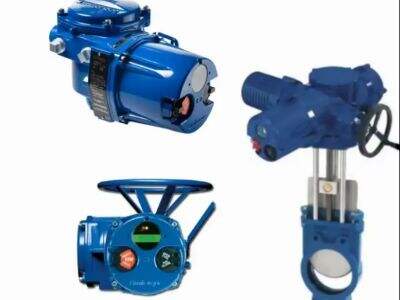Привет, молодые читатели! И сегодня мы собираемся узнать немного о регулирующих клапанах и о том, как они помогают делать работу лучше. Регулирующие клапаны и клапан Bop играют очень важную роль в управлении потоком жидкостей и газов в различных типах машин, а также в различных системах. Наша компания - Xiangjing, с радостью представляет вам это руководство для изучения основ регулирующих клапанов!
Что такое части регулирующего клапана?
Теперь, прежде чем мы перейдем к тому, как работают регулирующие клапаны, давайте внимательнее взглянем на их различные компоненты.
Корпус клапана: корпус является основным компонентом регулирующего клапана. Иными словами, мы можем открывать и закрывать указанное отверстие, чтобы пропустить больше жидкости, или полностью перекрыть её.
Исполнительный механизм: Исполнительный механизм является одной из самых важных частей, так как он обеспечивает движение корпуса клапана. Он используется для управления потоком путем открытия или закрытия клапана. Мы называем исполнительные механизмы, которые используют жидкость под давлением для выполнения работы, гидравлическими исполнительными механизмами. Способ функционирования каждого типа для влияния на поток различен.
Позиционер: Позиционер является еще одним компонентом регулирующего клапана. Он заставляет исполнительный механизм знать, куда позиционировать корпус клапана. Позиционер получает сигналы от контроллера о том, насколько нужно открыть или закрыть клапан. Это гарантирует, что клапан всегда находится в правильном положении, когда это необходимо.
Как работают регулирующие клапаны?
Вот как они фактически функционируют, когда мы знакомы с компонентами регулирующего клапана.
Линейный: Он состоит из клапан Bop корпуса, который движется вверх или вниз, образуя линейный регулирующий клапан. Это означает, что линейные клапаны обычно довольно просты и невероятно надежны.
Затем существуют вращающиеся регулирующие клапаны, в которых корпус клапана поворачивается для управления потоком. У них есть более высокая пропускная способность, что делает их подходящими для более широкого спектра применений.
Недавние инновации в технологии регулирующих клапанов
Мир технологий постоянно развивается, и регулирующие клапаны не являются исключением. Регулирующие клапаны — несколько новых технологий в области регулирующих клапанов, которые используются сегодня. Вот некоторые из них:
Умные позиционеры: Они лучше адаптированы для выполнения специальных функций, таких как измерение реального состояния клапана, функционирование тревоги и многих других. Их также можно настроить для работы клапана в различных режимах в зависимости от процесса.
Частичное тестирование хода: Это отличная технология, которая позволяет тестировать клапан без полной остановки. Это означает, что мы можем проверить клапан без каких-либо проблем.
Обслуживание регулирующих клапанов
Профилактическое обслуживание регулирующих клапанов критически важно для поддержания и продления срока службы регулирующих клапанов. Ниже обсуждаются советы по обслуживанию регулирующих клапанов:
Поддержание чистоты: очистка регулирующего клапана очень важна. Регулярная очистка клапана поддерживает все в идеальном состоянии.
Заливка масла: масло или смазка, которые необходимо наносить, требуются для некоторых частей регулирующего клапана, чтобы он работал плавно. Представьте это как смазывание шестеренок.
Калибровка – процесс, который проверяет правильное функционирование клапана. Это означает, что клапан открывается и закрывается в нужные моменты. Чтобы клапан оставался точным и работал правильно, хорошей практикой является регулярная проверка.
НЕ ПЕРЕУЖИМЫВАЙТЕ: не перекручивайте клапан. Если вы слишком затянете, вы можете сломать или повредить клапан. Затягивайте детали только настолько, насколько это необходимо для удержания всего на месте.
Оптимизация производительности регулирующих клапанов
Регулирующие клапаны можно проектировать так, чтобы сделать их эффективными, а эффективность означает лучшую и более результативную работу. Вот некоторые методики оптимизации управления клапанами:
Подберите Клапан Под Задачу: Очень важно выбрать регулирующий клапан, подходящий для выполнения необходимой задачи. Клапан должен быть правильного типа и размера для соответствующего процесса.
Настройте ПАРАМЕТРЫ позиционера: Настройки позиционера могут значительно повлиять на производительность клапана.
Постоянные Тесты: Тестирование регулирующих клапанов так же критично, как и калибровка. Регулярные тесты обеспечат контроль за тем, что всё работает так, как было предназначено, и помогут избежать проблем в будущем, выявляя сбои на ранней стадии.
Подводя итог, регулирующие клапаны играют крайне важную роль во многих машинах и процессах. Поэтому использование различных новых технологий вокруг клапан Bop и клапан управления,和支持 его в хорошем состоянии — это один из способов улучшить эту функцию управления и обеспечить плавное протекание процессов.



 EN
EN
 AR
AR
 BG
BG
 HR
HR
 CS
CS
 DA
DA
 NL
NL
 FI
FI
 FR
FR
 DE
DE
 EL
EL
 HI
HI
 IT
IT
 JA
JA
 KO
KO
 NO
NO
 PL
PL
 PT
PT
 RO
RO
 RU
RU
 ES
ES
 SV
SV
 CA
CA
 TL
TL
 IW
IW
 ID
ID
 LV
LV
 LT
LT
 SR
SR
 SK
SK
 SL
SL
 UK
UK

